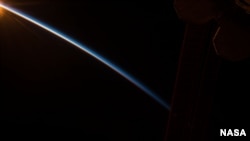An experimental satellite slated for launch on Wednesday will test a technique to detect ripples in space and across time, adding a new perspective for viewing and understanding the universe.
From a vantage point 93 million miles (1.5 million kilometers) from Earth, the European-built spacecraft, known as LISA Pathfinder, is expected to break ground in the search for the ripples, known as gravitational waves, caused by fast-moving, massive celestial objects such as merging black holes.
Black holes are so dense with matter that not even photons of light can escape the powerful gravitational effects.
"This will really open up a new window into the universe. God knows what we will learn," said European Space Agency deputy mission scientist Oliver Jennrich.
Like light, gravity travels in waves. Unlike light, gravitational waves bend the interwoven fabric of space and time, a phenomenon conceptualized by physicist Albert Einstein a century ago. Before Einstein's general theory of relativity, gravity was seen as a force between two bodies.
In the pre-Einstein view of physics, if the sun disappeared one day, people on Earth would feel it instantly. In Einstein's view, the effects would not be felt for eight minutes, the time both light waves and gravitational waves take to travel from the sun to Earth.
'Spectrum of gravitational waves'
So far, attempts to detect gravitational waves using Earth-based detectors have been unsuccessful.
Massive objects such as black holes bend space and time more than smaller bodies like the sun, similar to how a bowling ball warps the surface of a trampoline more than a baseball.
"There's a whole spectrum of gravitational waves, just like there's a whole spectrum of electromagnetic waves," said astrophysicist Ira Thorpe of NASA's Goddard Space Flight Center.
An operational gravitational wave observatory under development would require three satellites, flying in a triangle formation about 621,000 miles (1 million kilometers) apart. The satellites would contain small metal cubes that would oscillate as a gravitational wave passes through, similar to a buoy rising and falling on the ocean.
Using a laser to measure tiny changes in distance between the cubes, scientists hope to track the subtle flexing of space and time. LISA (Evolved Laser Interferometer Space Antenna) Pathfinder will demonstrate the concept with two metal cubes 15 inches (38 cm) apart inside a single spacecraft.
Launch is set for 0415 GMT on Wednesday (11:15 p.m. EST on Tuesday) from the European Space Agency's Kourou, French Guiana launch site. It will need six weeks to reach its intended orbit and another three months to prepare for science operations.
The mission, designed to last six months, will cost about 400 million euros ($423 million).










